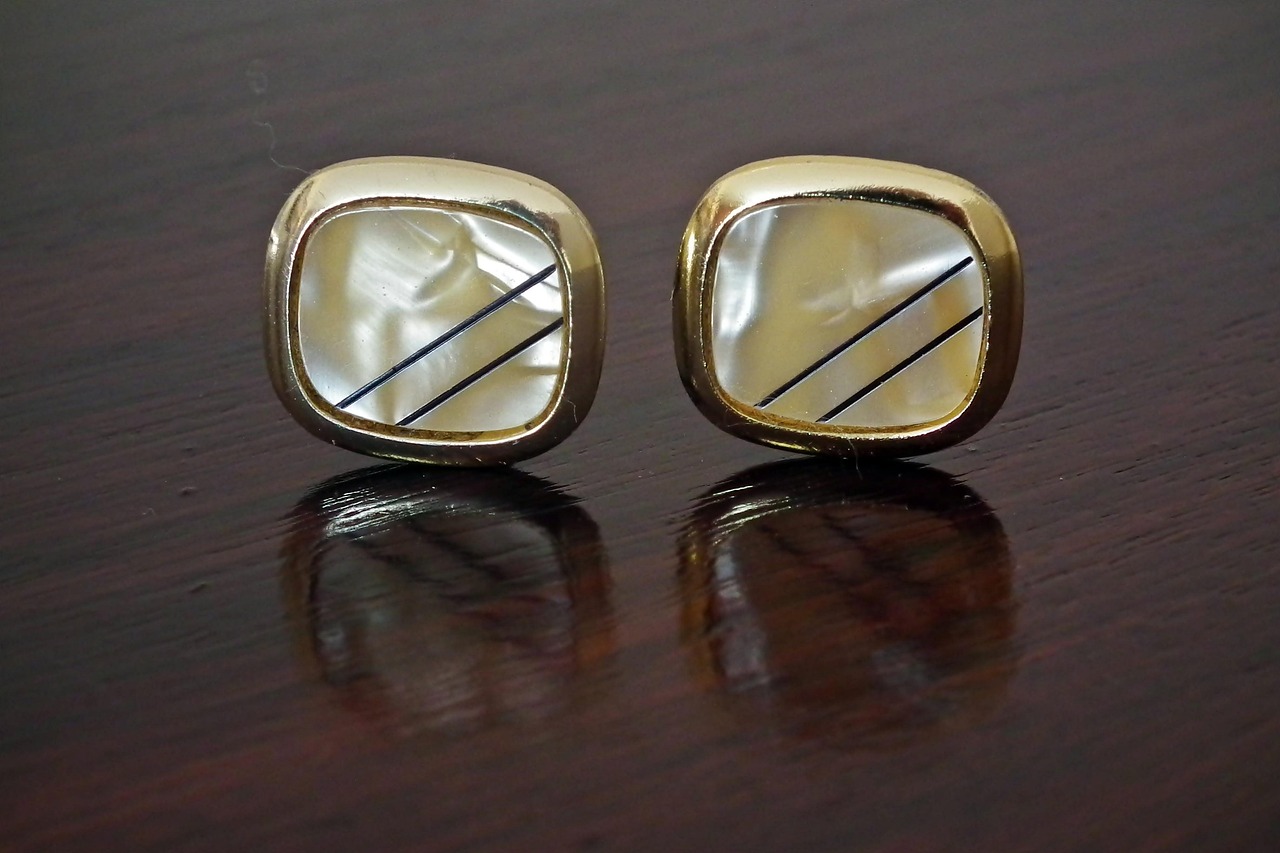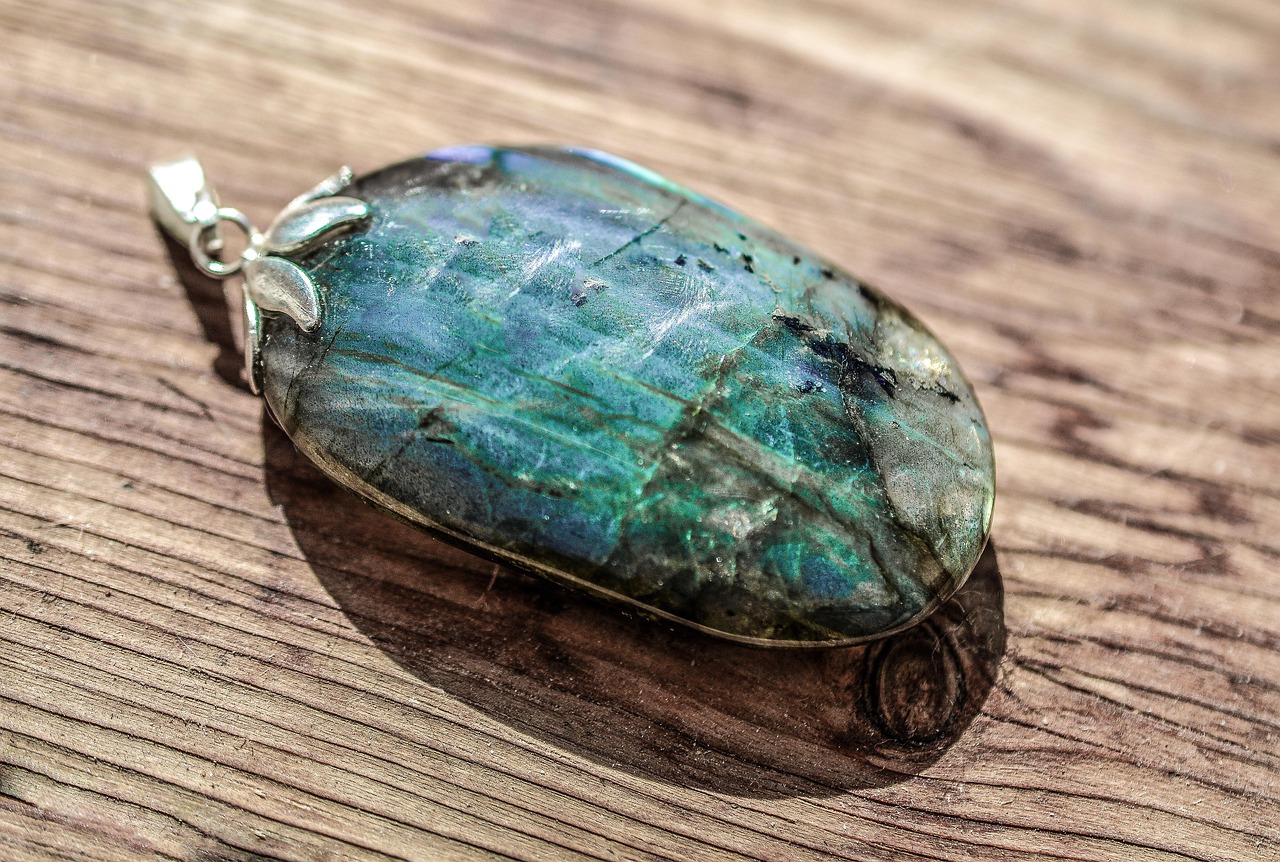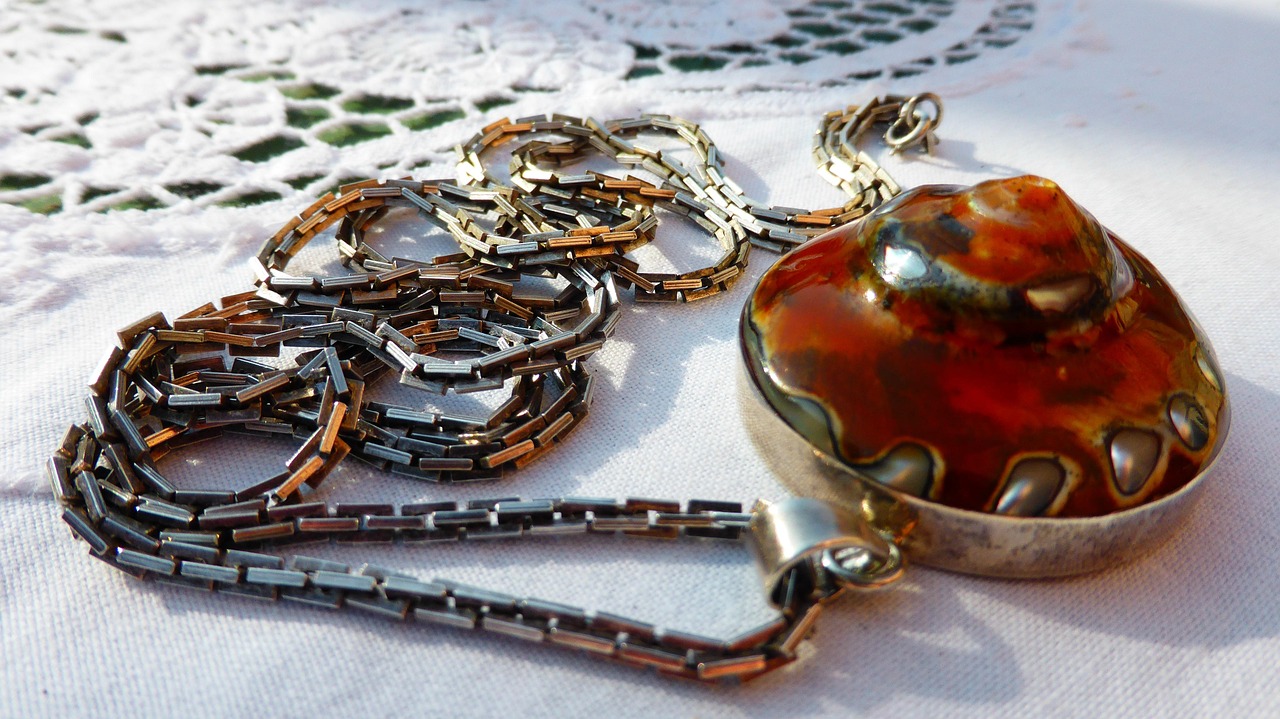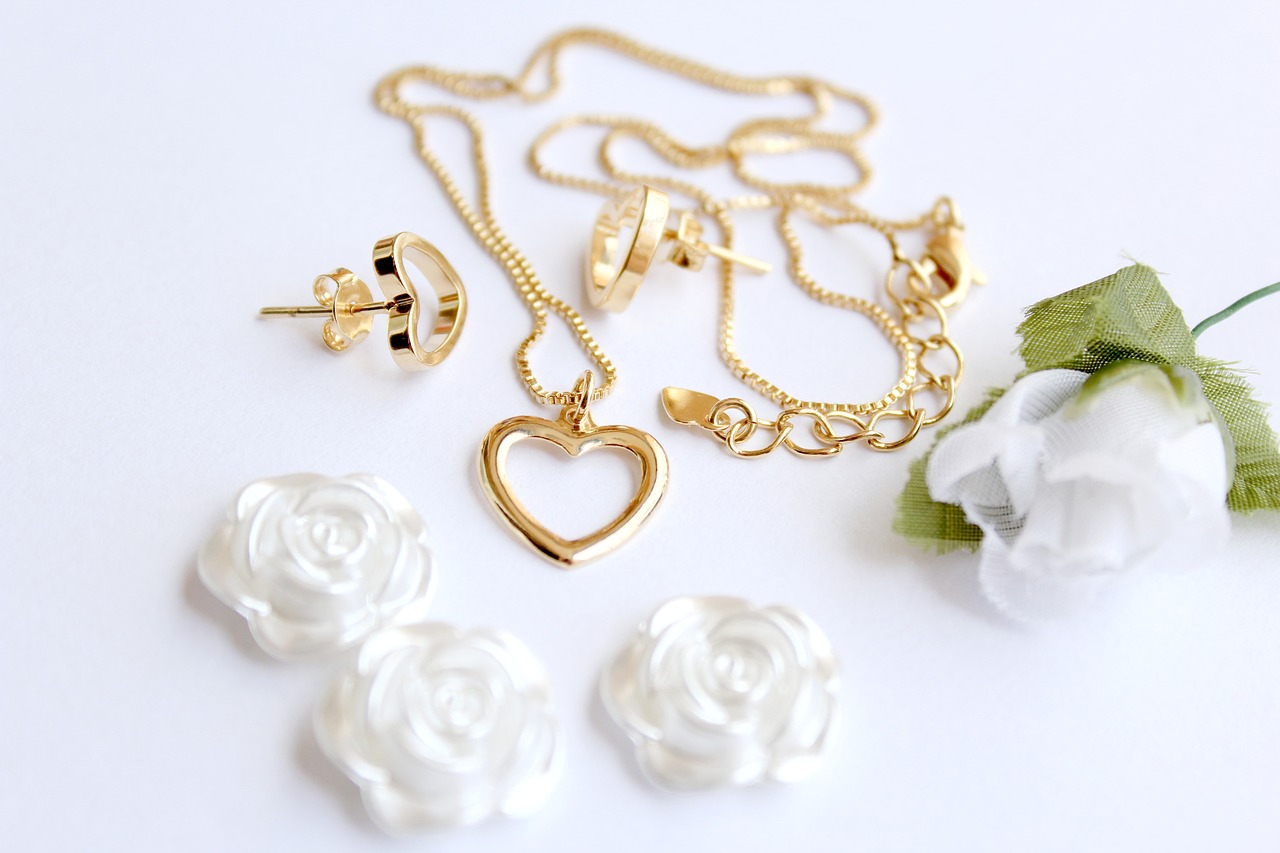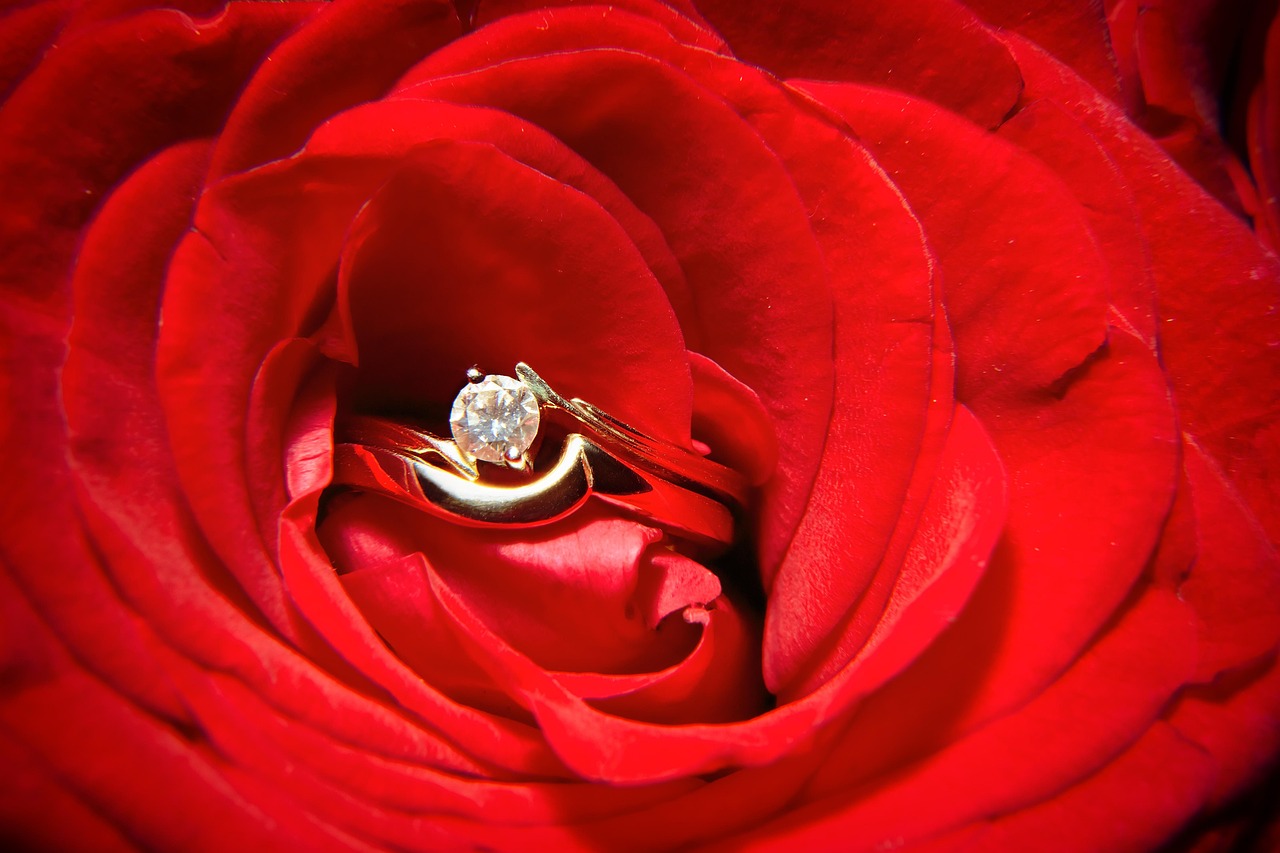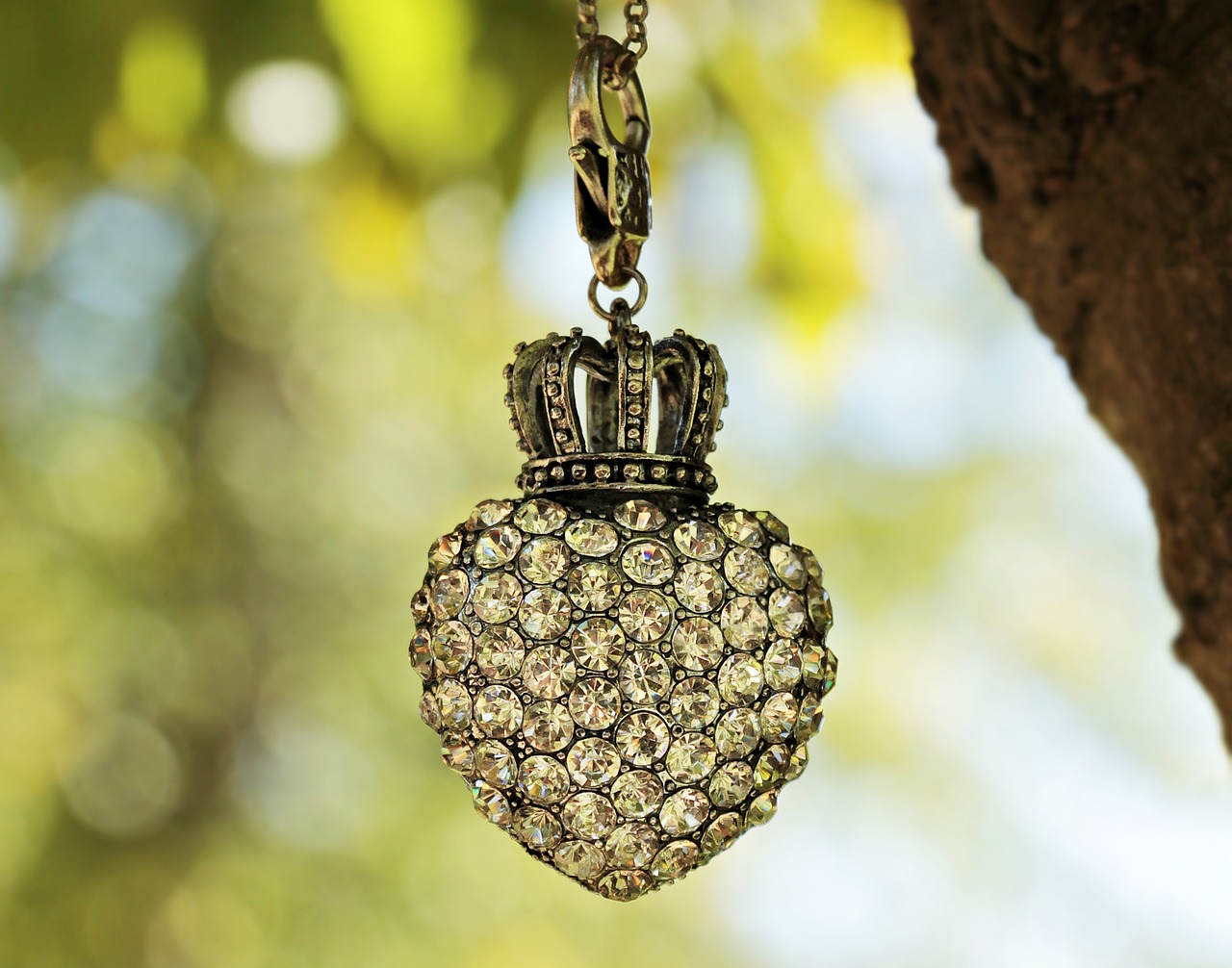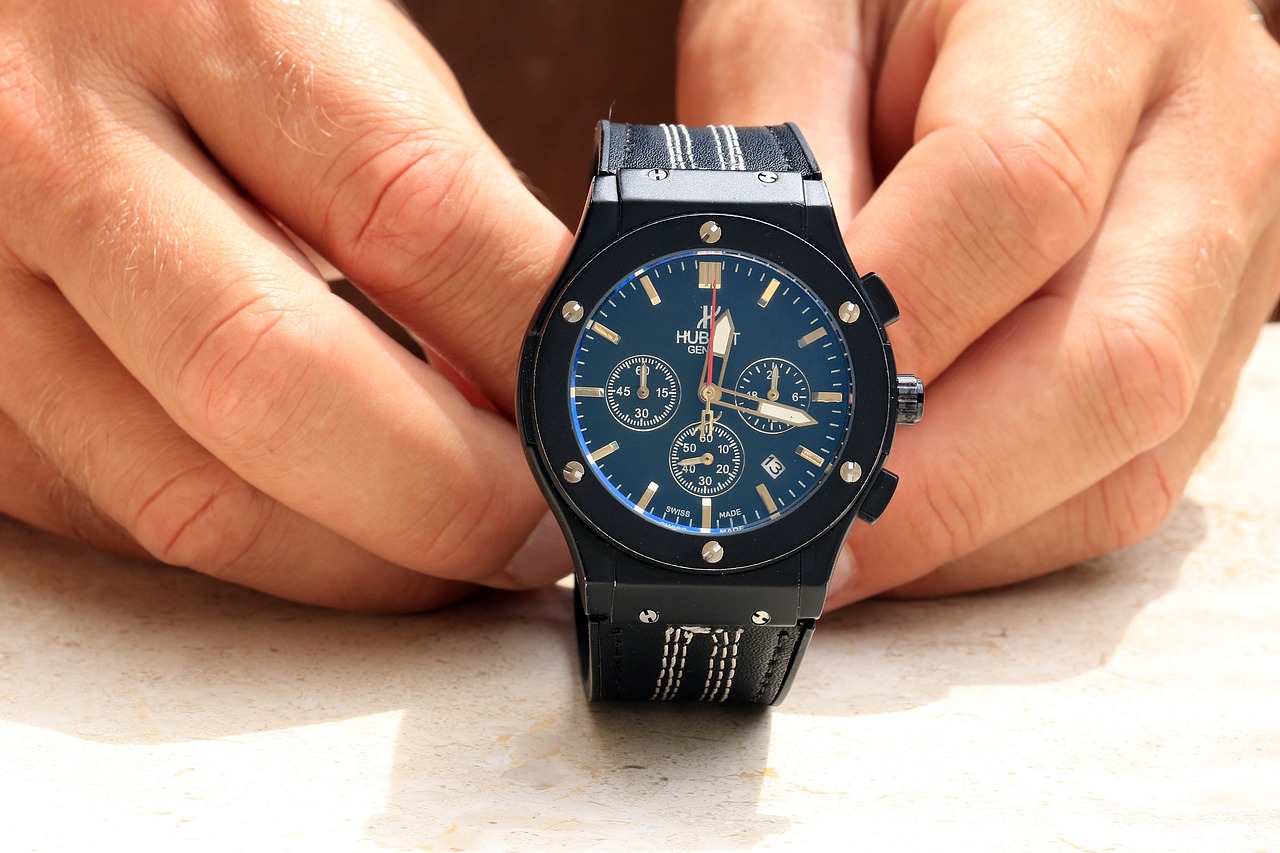Restoring old or damaged jewelry is not just about aesthetics; it’s also about preserving sentimental value and investment. This article delves into effective methods and techniques for rejuvenating your cherished pieces, ensuring they regain their former beauty and value.
Jewelry can suffer from various types of damage over time. Understanding these issues is crucial for selecting the right restoration method. Common types of damage include:
- Scratches: Surface abrasions can dull the shine of metals and gemstones.
- Tarnishing: Silver and other metals can tarnish, leading to discoloration.
- Broken Clasps: A malfunctioning clasp can render a piece unwearable.
Home cleaning methods can effectively restore the shine of your jewelry without the need for professional services. Here are some simple techniques:
Many household items can serve as effective cleaning agents for your jewelry:
- Baking Soda: A gentle abrasive that can remove tarnish.
- Vinegar: A natural cleaner that can break down grime.
- Dish Soap: Mild soap mixed with water can clean delicate pieces.
To create a paste for cleaning, mix three parts baking soda with one part water. Apply this paste to tarnished areas using a soft cloth, then rinse thoroughly. This method is particularly effective for silver jewelry.
Mix equal parts vinegar and water in a bowl. Soak your jewelry for 10-15 minutes, then gently scrub with a soft brush. Rinse well and dry with a soft cloth to restore shine.
While many repairs can be done at home, certain situations warrant professional intervention. If your jewelry has:
- Significant structural damage
- Loose or missing stones
- Complex designs that require specialized tools
It’s best to consult a jeweler to avoid further damage.
Different techniques can be employed to address various types of jewelry damage. Some of the most effective methods include:
- Soldering: A technique used to join broken metal parts.
- Stone Resetting: Necessary when gemstones become loose or fall out.
- Polishing: Restores shine and removes minor scratches.
Soldering involves melting a filler metal to join broken pieces. This process requires precision and is best performed by a skilled jeweler, especially for intricate designs.
Stone resetting is crucial when gemstones become loose or fall out. Regularly check your jewelry for loose stones to prevent loss. If you notice any movement, consult a professional for resetting.
Preventative care is essential for maintaining the beauty and longevity of your jewelry. Consider the following practices:
Proper storage can prevent scratches and tarnishing. Use:
- Jewelry boxes: Soft-lined compartments to protect pieces.
- Anti-tarnish pouches: To keep silver from tarnishing.
Different materials require specific care techniques. For instance, gold can be polished with a soft cloth, while pearls should be wiped with a damp cloth to maintain their luster. Understanding these needs ensures your jewelry remains in excellent condition.
Professional restoration offers expertise and specialized tools that can achieve results beyond DIY methods. When you invest in professional services, you enhance the longevity and value of your jewelry.
Selecting the right jeweler is crucial for quality restoration. Look for:
- Experience: Years in the business can indicate reliability.
- Reviews: Customer feedback can provide insight into their work.
- Services Offered: Ensure they specialize in the type of restoration you need.
Understanding the process and expected outcomes of professional restoration services can prepare you for the journey of rejuvenating your jewelry. Expect a thorough assessment, expert advice, and a clear timeline for the restoration process.

What Are the Common Types of Jewelry Damage?
Jewelry, often regarded as a personal treasure, can suffer from a variety of damages over time. Understanding the types of damage that jewelry can sustain is crucial for determining the most effective restoration methods. This knowledge not only helps in preserving the aesthetic appeal of your pieces but also maintains their value. Below, we explore the most common types of jewelry damage, including scratches, tarnishing, and broken clasps.
- Scratches: One of the most frequent issues faced by jewelry is scratches. These can occur from everyday wear and tear, especially on rings and bracelets. Scratches not only mar the appearance of the piece but can also weaken the metal over time, leading to more severe damage.
- Tarnishing: Tarnishing affects metals like silver and can cause a dull, discolored appearance. This chemical reaction occurs when the metal reacts with sulfur or oxygen in the air. Regular cleaning can help prevent tarnishing, but once it occurs, it requires specific cleaning methods to restore the original shine.
- Broken Clasps: The clasp is a crucial component of necklaces and bracelets, ensuring that the piece stays secure. A broken clasp can lead to the loss of the jewelry piece itself. Repairing or replacing a clasp is often a straightforward process, but it is essential to address it promptly to avoid losing the item.
- Loose Stones: For gemstone jewelry, a common issue is loose or fallen stones. This can happen due to wear or improper settings. Loose stones not only detract from the beauty of the piece but also pose a risk of complete loss if not addressed.
- Discoloration: Over time, certain materials may undergo discoloration due to exposure to various elements. This can be particularly noticeable in costume jewelry or pieces made from non-precious metals.
Recognizing these types of damage is the first step in effective jewelry restoration. Each type of damage may require a different approach, from simple at-home cleaning methods to professional repairs. By understanding the specific issues your jewelry may face, you can better maintain its beauty and functionality.
In summary, being aware of the common types of jewelry damage empowers you to take proactive measures in caring for your treasured pieces. Whether you are dealing with scratches, tarnishing, or broken clasps, timely intervention can ensure that your jewelry remains a cherished part of your collection for years to come.

How to Clean Your Jewelry at Home?
Cleaning your jewelry at home is not only a cost-effective solution but also a way to maintain the beauty and longevity of your cherished pieces. Over time, jewelry can accumulate dirt, oils, and tarnish, which can dull its shine. Fortunately, there are several effective home cleaning methods that can help restore your jewelry to its original brilliance.
Home cleaning methods can effectively restore shine to your jewelry. Simple solutions using household items can remove dirt and grime without causing damage. Here are some methods you can try:
- Baking Soda: This gentle abrasive is perfect for removing tarnish from silver and gold jewelry. Create a paste by mixing baking soda with a small amount of water.
- Vinegar: A natural cleaner, vinegar can dissolve dirt and tarnish. Mixing it with water in equal parts can create an effective cleaning solution.
- Dish Soap: A few drops of mild dish soap mixed with warm water can safely clean most jewelry types.
- Toothpaste: Non-gel toothpaste can be used to polish jewelry, especially pieces with intricate designs.
To use baking soda for cleaning, follow these steps:
- Mix three parts baking soda with one part water to form a paste.
- Apply the paste to your jewelry using a soft cloth or a soft-bristled toothbrush.
- Gently scrub the jewelry, paying special attention to crevices.
- Rinse thoroughly under warm water and dry with a soft cloth.
The vinegar and water solution is particularly effective for silver jewelry:
1. Combine 1/2 cup of vinegar with 2 tablespoons of baking soda in a bowl.2. Soak the jewelry in the solution for two to three hours.3. Rinse with cold water and dry with a soft cloth.
While many repairs can be done at home, some situations require professional intervention. If you notice significant damage, such as loose stones or broken clasps, it’s best to consult a jeweler. Seeking professional help can save your jewelry from further damage.
Prevention is key to maintaining the beauty of your jewelry. Here are some tips:
- Store Properly: Keep your jewelry in a cool, dry place, preferably in a lined jewelry box or a soft pouch.
- Avoid Chemicals: Remove jewelry before using cleaning products or swimming in chlorinated water.
- Regular Cleaning: Establish a routine to clean your jewelry to prevent buildup of dirt and tarnish.
By utilizing these home cleaning methods and taking preventive measures, you can ensure your jewelry remains in excellent condition for years to come. Regular care not only enhances the appearance of your pieces but also preserves their value and significance.
What Household Items Can You Use for Cleaning?
Cleaning jewelry at home can be both safe and effective when you know the right household items to use. Many people are unaware that common products found in their kitchens can help restore the shine and beauty of their precious pieces. In this section, we will explore various household items that are not only effective but also gentle enough to clean jewelry without causing damage.
Several household items can be used to clean jewelry effectively. Here’s a detailed look at some of the most popular options:
- Baking Soda: This versatile ingredient is a gentle abrasive that can help remove tarnish from metals. To create a cleaning paste, mix three parts baking soda with one part water. Apply this paste to your jewelry using a soft cloth, then rinse thoroughly with warm water.
- Vinegar: White vinegar is an excellent natural cleaner that can help dissolve dirt and grime. For a safe cleaning solution, mix equal parts of vinegar and water. Soak your jewelry for about 15-20 minutes, then gently scrub with a soft toothbrush before rinsing.
- Dish Soap: A few drops of mild dish soap mixed with warm water can create a gentle cleaning solution. Soak your jewelry in this mixture for a few minutes, then gently scrub with a soft cloth to remove any dirt or oils.
- Toothpaste: Non-gel toothpaste can work wonders on jewelry, particularly for silver pieces. Apply a small amount to a soft cloth and gently rub the jewelry. Rinse thoroughly to remove any residue.
- Olive Oil: For wooden jewelry or pieces with a wooden element, a small amount of olive oil can help restore shine. Apply a few drops to a soft cloth and buff the surface gently.
Using these household items can be both cost-effective and environmentally friendly. However, it’s essential to know your jewelry materials before applying any cleaning method. Some stones, such as pearls and opals, may require special care and should not be exposed to harsh chemicals.
- Test First: Always test your cleaning solution on a small, inconspicuous area of the jewelry to ensure it won’t cause damage.
- Gentle Approach: Use soft cloths or brushes to avoid scratching the surface of your jewelry.
- Rinse Thoroughly: Make sure to rinse off any cleaning solutions completely to prevent residue buildup.
- Dry Properly: After cleaning, dry your jewelry with a soft cloth to prevent water spots and tarnishing.
By utilizing these household items and following safe cleaning practices, you can keep your jewelry looking stunning and well-maintained. Remember, regular cleaning can help prevent buildup and prolong the life of your treasured pieces.
Using Baking Soda for Jewelry Restoration
Baking soda is a versatile and gentle abrasive that can effectively restore the shine to your jewelry while removing tarnish. It is an excellent choice for those looking to clean their jewelry at home without the use of harsh chemicals. This simple yet effective method can rejuvenate your precious pieces, making them look as good as new.
To create a cleaning paste using baking soda, follow these simple steps:
- Gather Your Materials: You will need baking soda, water, a small bowl, and a soft cloth or toothbrush.
- Mix the Paste: In the bowl, combine three parts baking soda with one part water. Stir until you achieve a thick paste.
- Apply the Paste: Using the soft cloth or toothbrush, gently apply the paste to the tarnished areas of your jewelry. Be sure to use circular motions for even coverage.
- Let It Sit: Allow the paste to sit on the jewelry for about 10-15 minutes. This will give it time to break down the tarnish.
- Rinse Thoroughly: After the waiting period, rinse your jewelry under lukewarm water to remove all traces of the baking soda paste.
- Dry and Polish: Use a clean, dry cloth to gently buff the jewelry to a shine.
When using baking soda, it’s essential to consider the type of metal your jewelry is made from. While baking soda is safe for most metals, avoid using it on delicate materials such as pearls or soft gemstones, as it may scratch their surfaces. Instead, opt for a milder cleaning solution for these items.
Another benefit of using baking soda is its non-toxic nature, making it an environmentally friendly option for cleaning. This is particularly important for those who are conscious about the products they use in their homes. Plus, baking soda is readily available and inexpensive, making it a cost-effective solution for jewelry care.
In addition to its cleaning properties, baking soda can also help to neutralize odors that may cling to certain jewelry pieces, especially those worn frequently. This added benefit makes it a great choice for maintaining the overall freshness of your jewelry collection.
For optimal results, consider incorporating this baking soda cleaning method into your regular jewelry maintenance routine. By doing so, you can ensure that your pieces remain in excellent condition, preserving their beauty and value over time.
In summary, baking soda is a powerful ally in the quest for sparkling jewelry. Its gentle abrasive properties, combined with its affordability and eco-friendliness, make it a top choice for DIY jewelry restoration. With just a few simple steps, you can bring your tarnished treasures back to life!
Vinegar and Water Solution for Cleaning
Cleaning jewelry can often feel like a daunting task, especially when it comes to restoring its original luster. One effective and safe method involves using a vinegar and water solution. This solution not only helps in removing dirt and grime but also revitalizes the shine of various jewelry materials. In this section, we will explore the right proportions, methods, and safety tips for using this solution effectively.
When preparing a vinegar and water cleaning solution, the right proportions are crucial for achieving optimal results. A common and effective ratio is 1 part vinegar to 3 parts water. This dilution helps ensure that the acidity of the vinegar is balanced, making it safe for most jewelry types.
Cleaning your jewelry with this solution is straightforward. Here’s a simple step-by-step guide:
- Gather Your Materials: You will need white vinegar, water, a bowl, and a soft cloth or toothbrush.
- Mix the Solution: In a bowl, combine 1 part vinegar with 3 parts water.
- Soak the Jewelry: Place your jewelry in the solution and let it soak for about 15-20 minutes. This allows the solution to penetrate and loosen any dirt or tarnish.
- Gentle Scrubbing: After soaking, use a soft cloth or a soft-bristled toothbrush to gently scrub the jewelry. Focus on intricate designs where dirt may accumulate.
- Rinse and Dry: Rinse the jewelry thoroughly under lukewarm water to remove any vinegar residue. Dry it carefully with a soft cloth.
While vinegar is effective for many types of jewelry, it is important to know which materials are safe to clean with this solution:
- Gold: Both yellow and white gold can be cleaned with the vinegar solution without damage.
- Silver: Sterling silver jewelry benefits from vinegar cleaning, helping to remove tarnish effectively.
- Gemstones: Most gemstones, including diamonds and sapphires, are safe to clean with this method. However, avoid using vinegar on porous stones like opals or pearls, as they can be damaged.
While vinegar is a gentle cleaner, there are a few precautions to keep in mind:
- Test First: Always test the solution on a small, inconspicuous area of the jewelry first to ensure it does not cause any adverse reactions.
- Limit Soaking Time: Do not soak jewelry for too long, as prolonged exposure to vinegar can lead to damage.
- Avoid Certain Materials: As mentioned earlier, avoid using vinegar on porous or delicate materials to prevent damage.
Using a vinegar and water solution is a simple yet effective way to clean and restore your jewelry’s shine. By following the right proportions and methods, you can safely maintain the beauty of your favorite pieces. Regular cleaning not only enhances their appearance but also prolongs their lifespan, ensuring you can enjoy your jewelry for years to come.
When to Seek Professional Help?
Jewelry can be a cherished possession, often holding sentimental value and memories. While many repairs can be accomplished at home, there are specific circumstances where professional intervention is not just recommended but necessary. Recognizing these situations can be crucial in preventing further damage to your beloved pieces.
It’s essential to be aware of the signs indicating that a jewelry piece needs expert care. Here are some common indicators:
- Severe Damage: If your jewelry has noticeable cracks, breaks, or missing stones, attempting a DIY fix may worsen the situation.
- Tarnishing Beyond Cleaning: When standard cleaning methods fail to restore shine, it might be time for professional polishing or plating.
- Loose Stones: If gemstones feel loose in their settings, it is critical to seek a jeweler’s expertise to prevent loss.
- Complex Repairs: Repairs involving intricate designs, such as soldering delicate chains or resetting multiple stones, often require specialized tools and skills.
Engaging a professional jeweler offers several advantages that go beyond simple repairs:
- Expert Knowledge: Professional jewelers have extensive training and experience, which allows them to assess damage accurately and recommend the best restoration methods.
- Specialized Tools: Access to high-quality tools and equipment enables jewelers to perform repairs that are not feasible at home.
- Quality Assurance: Professional services often come with guarantees, ensuring that the work meets high standards and lasts over time.
Understanding specific scenarios can help you determine when to seek professional assistance:
- Inherited or Vintage Pieces: Older jewelry may require specialized care to preserve its integrity and historical value.
- High-Value Items: For expensive jewelry, the risk of further damage during DIY attempts outweighs the cost of professional repair.
- Restoration of Heirlooms: Family heirlooms often carry significant sentimental value, making professional restoration a wise choice to maintain their legacy.
Selecting a qualified professional is crucial for effective restoration. Here are some tips:
- Research: Look for jewelers with positive reviews and testimonials. Personal recommendations can also be invaluable.
- Experience: Consider the jeweler’s experience with the specific type of repair you need, such as gemstone resetting or metalwork.
- Consultation: A good jeweler will provide a thorough consultation, explaining the repair process and expected outcomes.
When you take your jewelry to a professional, you can expect:
- Assessment: A detailed examination of the piece to identify all areas that need attention.
- Repair Process: Clear communication regarding the steps involved in the restoration, including timelines and costs.
- Final Inspection: After repairs, the jeweler should conduct a final inspection to ensure the piece meets quality standards before returning it to you.
In conclusion, while DIY methods can be effective for minor repairs, knowing when to seek professional help is vital in preserving the beauty and value of your jewelry. By recognizing the signs of damage, understanding the benefits of professional restoration, and selecting the right jeweler, you can ensure that your treasured pieces receive the care they deserve.
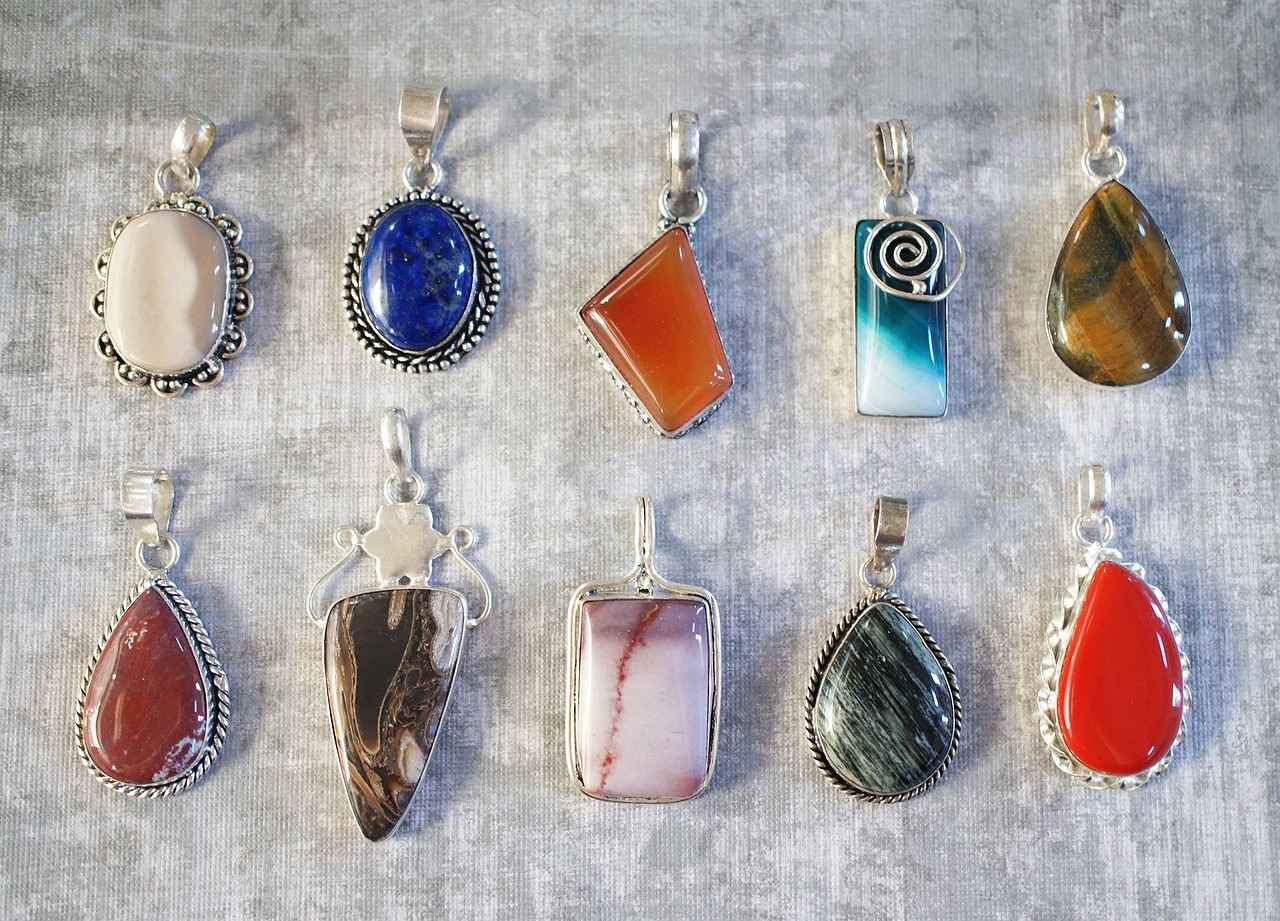
What Are the Best Techniques for Repairing Jewelry?
When it comes to restoring jewelry, understanding the best techniques for repair is essential. Jewelry can experience various types of damage, each requiring specific methods for effective restoration. In this section, we will explore several techniques, including soldering, stone resetting, and polishing, to help you make informed decisions about your treasured pieces.
Jewelry repair is an art that combines skill, knowledge, and the right tools. Here are some of the most common techniques used in the industry:
- Soldering: This technique is primarily used to join two pieces of metal together. It is particularly useful for repairing broken chains, clasps, or any item with metal components. A jeweler uses a soldering iron or torch to melt solder, which fills the gap between the pieces and forms a solid bond once cooled.
- Stone Resetting: When gemstones become loose or fall out, stone resetting is necessary. This process involves removing the stone from its setting and carefully placing it back to ensure it is secure. It’s crucial to identify when a stone needs resetting to prevent loss.
- Polishing: Over time, jewelry can accumulate scratches and tarnish, diminishing its shine. Polishing involves using specialized tools and compounds to restore the surface of the metal, bringing back its original luster.
Soldering requires precision and skill. Here’s a brief overview of the process:
1. Clean the broken edges of the jewelry piece.2. Apply flux to the area to help the solder flow.3. Heat the metal with a soldering iron or torch.4. Introduce solder to the joint until it flows into the gap.5. Allow the piece to cool and then polish the repair.
While DIY soldering is possible, it is often best left to professionals, especially for valuable pieces.
Stone resetting is vital for maintaining the integrity of your jewelry. Signs that your stones may need resetting include:
- Visible gaps between the stone and its setting
- Feeling loose when you gently push on the stone
- Noticing that the stone has fallen out
Regular inspections can help you catch these issues early, preventing the loss of precious stones.
Polishing not only enhances the appearance of your jewelry but also protects it from further damage. Regular polishing helps:
- Remove surface scratches and tarnish
- Enhance the overall shine and brilliance of the piece
- Extend the lifespan of the jewelry
Using the right polishing cloth and technique is essential to avoid damaging delicate pieces.
Selecting the appropriate repair technique depends on the type of damage and the material of the jewelry. Here are some tips:
- Assess the extent of the damage: Minor scratches may only require polishing, while broken pieces may need soldering.
- Consider the material: Different metals and gemstones may require specific care techniques.
- Seek professional advice if unsure: A qualified jeweler can provide insights on the best approach for your piece.
By understanding these techniques, you can ensure that your jewelry is restored effectively, maintaining its beauty and value for years to come.
How to Solder Broken Jewelry Pieces?
Soldering is a vital skill for anyone interested in jewelry repair. This technique involves melting a filler metal to join two pieces of metal together, making it an essential method for fixing broken jewelry. Understanding the basics of soldering can empower you to assess whether a repair is suitable for a DIY approach or if it requires the expertise of a professional jeweler.
Soldering is commonly used in jewelry making and repair due to its effectiveness in creating strong, lasting connections between metal parts. It is particularly useful for fixing broken chains, clasps, and even intricate settings that hold gemstones. Knowing how to solder can save you money and extend the life of your favorite pieces.
Before diving into soldering, it’s crucial to identify when this technique is appropriate. Here are some situations where soldering can be beneficial:
- Broken Chains: If your necklace or bracelet has a broken link, soldering can restore its integrity.
- Loose Clasps: A clasp that no longer functions properly can be soldered to ensure it stays secure.
- Damaged Settings: When a gemstone setting is compromised, soldering can help reattach it firmly.
To successfully solder jewelry, you’ll need a few essential tools:
- Soldering Iron: A reliable soldering iron or torch is necessary for heating the metal.
- Solder: Choose the right type of solder that matches the metal of your jewelry.
- Flux: This helps to clean the metal surfaces and promotes better solder flow.
- Safety Gear: Always wear safety goggles and work in a well-ventilated area to protect yourself.
Here’s a simplified process to get you started with soldering:
1. Clean the metal surfaces to remove any dirt or oxidation.2. Apply flux to the area where you will solder.3. Position the pieces together and heat the metal with your soldering iron.4. Introduce the solder to the joint; it should flow into the space between the metals.5. Allow the piece to cool and check the strength of the bond.
While soldering can be a rewarding DIY project, there are instances when it’s best to consult a professional. If you are unsure about your ability to solder, or if the piece is particularly valuable or intricate, seeking expert assistance can prevent further damage.
It’s essential to recognize the potential risks involved with DIY soldering:
- Inadequate Bonding: If not done correctly, the joint may fail, leading to further damage.
- Heat Damage: Excessive heat can warp or discolor the metal.
- Injury Risk: Without proper safety precautions, you may risk burns or other injuries.
In conclusion, soldering is a valuable technique for repairing broken jewelry pieces. By equipping yourself with the right knowledge and tools, you can decide whether to take on the project yourself or seek professional help. Remember, while DIY can be rewarding, the safety and integrity of your jewelry should always come first.
What Is Stone Resetting and When Is It Necessary?
Stone resetting is a crucial process in the realm of jewelry maintenance, particularly when it comes to ensuring the security and aesthetic appeal of your precious gemstones. Over time, due to wear and tear, gemstones can become loose in their settings or even fall out entirely. Recognizing the signs that indicate your stones need professional resetting can prevent the loss of valuable pieces and maintain the integrity of your jewelry collection.
The primary purpose of stone resetting is to safeguard your gemstones from potential loss. When a stone is loose, it is at a higher risk of being knocked out during everyday activities. This can lead to not only financial loss but also emotional distress, especially if the piece holds sentimental value. Regular checks and maintenance can help in identifying any issues before they escalate.
- Feeling Loose: If you can move the gemstone with your fingers, it is time to seek professional help.
- Visible Gaps: Look for any gaps between the gemstone and its setting; this is a clear sign that the stone needs to be reset.
- Worn Prongs: Inspect the prongs holding the stone. If they appear thin or worn down, they may not securely hold the gemstone.
- Frequent Loss: If you have lost a stone before, it may be a sign that the setting is not adequate for the stone’s weight or type.
Professional jewelers possess the expertise and specialized tools necessary for effective stone resetting. They can ensure that the gemstone is securely held in place, reducing the chances of future loss. Additionally, they can assess the overall health of the piece, making suggestions for other necessary repairs or maintenance.
The process typically involves:
- Assessment: The jeweler examines the piece to determine the best resetting method.
- Preparation: The setting is cleaned and prepared for the new positioning of the stone.
- Resetting: The gemstone is carefully placed back into its setting, ensuring it is secure.
- Final Checks: After resetting, the piece is examined to ensure the stone is firmly in place and the overall look is restored.
It is advisable to have your jewelry, especially pieces with gemstones, checked at least once a year. Regular maintenance can help catch any potential issues early, saving you both time and money in the long run.
While some minor adjustments can be made at home, such as tightening loose prongs, it is generally recommended to seek professional assistance for stone resetting. Jewelers have the experience and tools to handle the delicate nature of gemstones, ensuring that they are not damaged during the process.
In summary, stone resetting is an essential aspect of jewelry care that cannot be overlooked. By staying vigilant and recognizing the signs that indicate a need for professional help, you can preserve the beauty and value of your treasured pieces. Don’t wait until it’s too late; take proactive steps to ensure your gemstones remain secure and stunning.
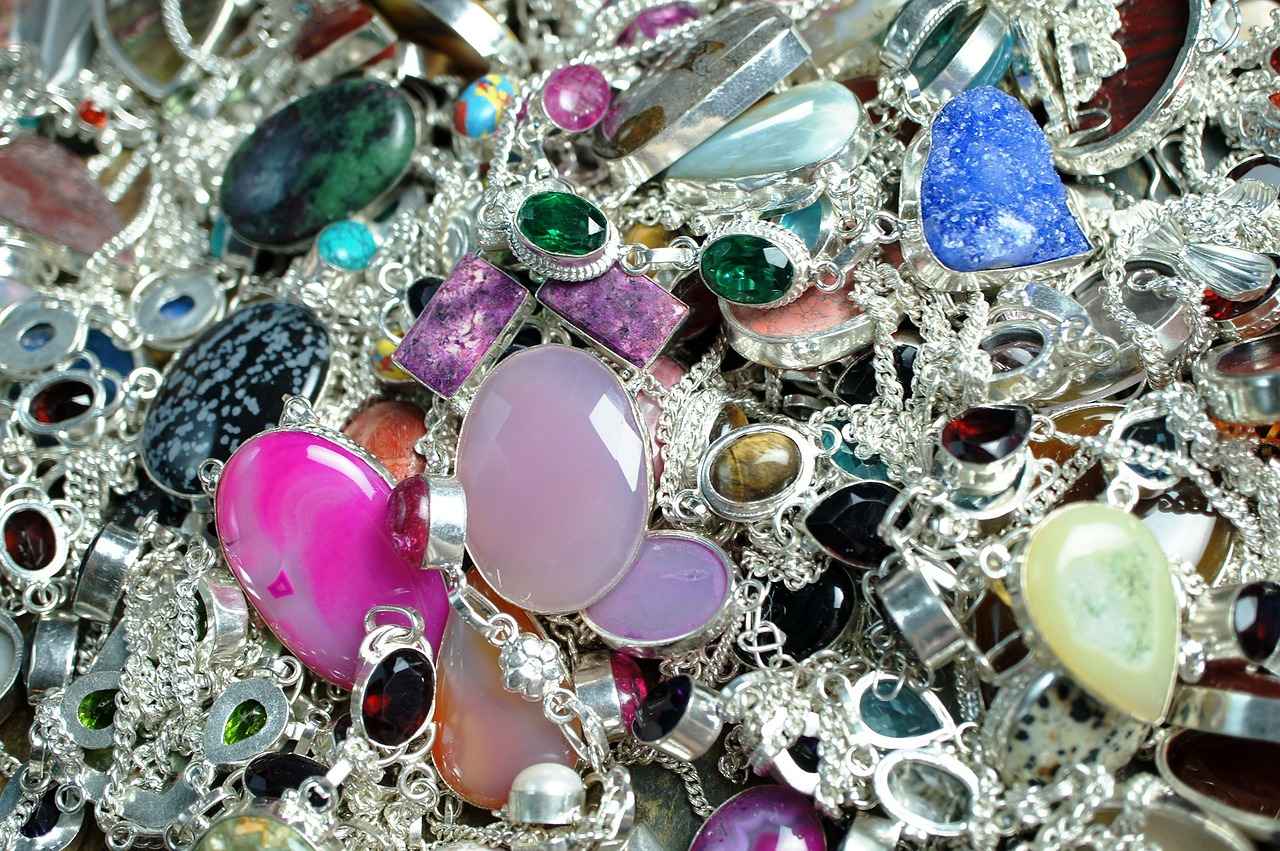
How to Prevent Future Damage to Your Jewelry?
Jewelry is not just an accessory; it often holds significant sentimental and monetary value. To ensure that your cherished pieces remain in pristine condition, preventative care is essential. By adopting simple yet effective practices, you can avoid damage and extend the lifespan of your jewelry.
Preventative care is crucial because it helps maintain the beauty and integrity of your jewelry. Regular maintenance can prevent issues such as tarnishing, scratching, and wear that can occur over time. By taking proactive steps, you can ensure that your jewelry not only looks beautiful but also retains its value.
- Regular Cleaning: Cleaning your jewelry regularly helps remove dirt and oils that can cause buildup and tarnishing. Use a soft cloth to wipe down your pieces after wearing them.
- Safe Storage: Store your jewelry in a cool, dry place. Consider using a jewelry box with individual compartments to prevent pieces from scratching each other.
- Avoid Exposure: Limit exposure to harsh chemicals, including household cleaners and beauty products, which can damage your jewelry.
- Periodic Inspections: Regularly check your jewelry for any signs of wear or damage, such as loose stones or weakened clasps, and address issues promptly.
Proper storage is one of the most effective ways to protect your jewelry. Here are some tips:
- Use Soft Pouches: Consider storing delicate pieces in soft fabric pouches to prevent scratches.
- Separate Pieces: Keep different types of jewelry separate—store necklaces, earrings, and bracelets in their own compartments to avoid tangling and scratching.
- Climate Control: Avoid storing jewelry in humid areas like bathrooms. Instead, keep it in a climate-controlled environment to prevent tarnishing.
Each jewelry material has unique care requirements. Here’s a brief overview:
- Gold: Gold jewelry should be cleaned with a mild soap solution and a soft brush. Avoid harsh chemicals.
- Silver: Silver tarnishes easily; use a silver polishing cloth to keep it shiny. Store it with anti-tarnish strips.
- Gemstones: Different gemstones require different care. Always check the specific care instructions for each stone.
If you notice any damage, such as a broken clasp or a loose stone, it’s important to take action quickly. Addressing issues early can prevent further damage and costly repairs. For minor issues, you may be able to fix them at home, but for more significant problems, consulting a professional jeweler is advisable.
It’s recommended to have your jewelry professionally inspected at least once a year. A jeweler can perform cleaning, check for damage, and make necessary repairs to keep your pieces looking their best.
By implementing these preventative care practices, you can enjoy your jewelry for many years to come, ensuring it remains as beautiful as the day you acquired it.
What Storage Solutions Help Preserve Jewelry?
Jewelry is often one of the most cherished possessions, holding sentimental value and aesthetic beauty. To ensure that your pieces remain in pristine condition, understanding the importance of proper storage is crucial. The right storage solutions not only help prevent scratches and tarnishing but also keep your jewelry organized and easily accessible.
Jewelry can be vulnerable to various forms of damage, including scratches from contact with other pieces and tarnishing due to exposure to air and moisture. By investing time in appropriate storage solutions, you can significantly extend the life of your jewelry collection.
- Jewelry Boxes: A well-designed jewelry box with separate compartments is ideal for storing various pieces. Look for boxes lined with soft fabric to prevent scratches.
- Organizers: Drawer organizers specifically designed for jewelry can help keep items separated and visible. This is particularly useful for smaller pieces like earrings and rings.
- Anti-Tarnish Pouches: Use anti-tarnish pouches or cloths for silver and gold jewelry. These pouches contain materials that absorb moisture and prevent tarnishing.
- Wall-Mounted Displays: For those who love to showcase their jewelry, wall-mounted displays can serve both as storage and decoration. Ensure pieces are securely fastened to avoid falling or tangling.
- Travel Cases: When traveling, use specialized travel cases that securely hold your jewelry in place to prevent damage.
Organization is key to maintaining your jewelry. Here are some tips:
- Sort by Type: Group similar items together—necklaces with necklaces, earrings with earrings. This makes it easier to find what you need.
- Use Labels: If you have a large collection, consider labeling compartments or drawers to quickly identify where each piece is stored.
- Regular Maintenance: Periodically check your jewelry for any signs of damage or tarnishing. This allows you to address issues before they worsen.
Choosing the right materials for storage can impact the longevity of your jewelry:
- Wood: Wooden boxes can be aesthetically pleasing and durable. Ensure they are lined with a soft material to prevent scratches.
- Plastic: Clear plastic organizers are affordable and can help you see your collection at a glance, but ensure they are acid-free to avoid damage.
- Fabric: Soft fabric pouches are excellent for individual pieces, protecting them from scratches and dust.
To further protect your jewelry, consider these additional tips:
- Avoid Humidity: Store jewelry in a cool, dry place to minimize the risk of tarnishing.
- Keep Away from Sunlight: Prolonged exposure to sunlight can fade gemstones and damage certain materials.
- Store Separately: Always store pieces separately to avoid tangling and scratching. Use dividers in drawers or boxes.
In summary, proper storage is essential for preserving the beauty and longevity of your jewelry. By implementing effective storage solutions, organizing your collection, and using the right materials, you can keep your cherished pieces looking their best for years to come.
How to Care for Different Jewelry Materials?
When it comes to jewelry, different materials require specific care techniques to maintain their beauty and integrity. Understanding the unique needs of various materials—such as gold, silver, and gemstones—ensures that your jewelry remains in excellent condition for years to come. This article will guide you through the essential care practices for each type of jewelry material.
Gold jewelry, known for its durability and luster, still requires regular maintenance to keep it looking its best. Here are some tips:
- Regular Cleaning: Use a soft cloth to wipe down your gold pieces after wearing them. This removes oils and dirt that can dull their shine.
- Gentle Cleaning Solutions: For deeper cleaning, mix warm water with a few drops of mild dish soap. Soak the jewelry for a few minutes, then gently scrub with a soft brush.
- Avoid Harsh Chemicals: Stay away from bleach and other harsh cleaners, as they can damage gold.
Silver jewelry is prone to tarnishing, which can detract from its appearance. To care for your silver pieces:
- Store Properly: Keep silver jewelry in a cool, dry place, preferably in anti-tarnish pouches or cloths.
- Regular Polishing: Use a silver polishing cloth to remove tarnish and restore shine. Regular polishing can prevent heavy tarnish buildup.
- Home Remedies: A paste made from baking soda and water can effectively remove tarnish. Apply gently with a soft cloth, then rinse and dry.
Gemstones require careful handling to avoid scratches and damage. Consider the following tips:
- Know Your Gemstones: Different gemstones have varying hardness levels. For example, diamonds are very hard, while opals are softer and more delicate.
- Clean with Caution: Use a soft, damp cloth for routine cleaning. For a deeper clean, a mild soap solution can be used, but be cautious with porous stones.
- Avoid Ultrasonic Cleaners: Some gemstones can crack or become damaged in ultrasonic cleaners. Always check if your gemstone is safe for such methods.
Taking care of your jewelry is essential not only for aesthetic reasons but also for preserving monetary value. Regular maintenance prevents costly repairs and ensures that your treasured pieces remain wearable and beautiful.
Be vigilant for signs that your jewelry needs attention:
- Tarnishing: A dull or discolored appearance, especially in silver.
- Loose Stones: Gems that appear to be shifting or moving in their settings.
- Scratches: Visible marks on the surface of metal or gemstones.
By understanding how to care for different jewelry materials, you can ensure that your pieces remain in excellent condition. Whether it’s gold, silver, or gemstones, each requires its own set of care techniques. Regular maintenance not only enhances the appearance of your jewelry but also prolongs its life, making it a worthwhile investment.
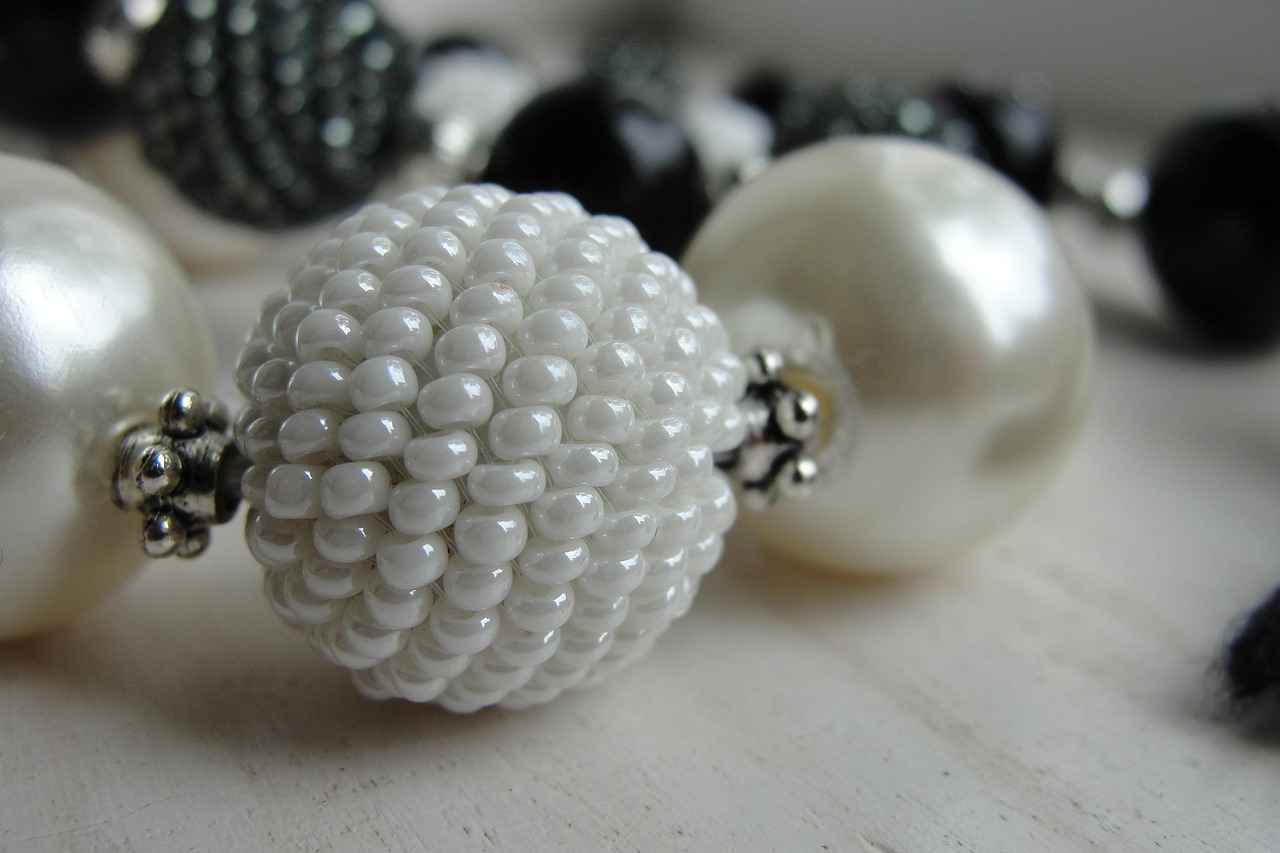
What Are the Benefits of Professional Jewelry Restoration?
When it comes to maintaining the beauty and value of your jewelry, professional restoration can make a significant difference. While many individuals may attempt to restore their pieces using DIY methods, the expertise and specialized tools that professionals possess often lead to results that far exceed what can be achieved at home. Understanding the benefits of enlisting a professional jeweler is essential for anyone looking to enhance the longevity and appearance of their treasured items.
While DIY methods can be effective for minor cleaning and maintenance, they often fall short when it comes to more complex issues. Professional restorers are equipped with advanced techniques and tools that allow them to tackle a variety of problems, such as:
- Deep Cleaning: Professionals use ultrasonic cleaners and steam cleaning methods that remove dirt and grime without damaging delicate materials.
- Repairing Structural Damage: Issues like broken clasps or fractured metal require specialized skills and tools that only a professional can provide.
- Stone Resetting: Loose or missing stones can be securely reset using professional techniques, minimizing the risk of further damage.
One of the most significant advantages of hiring a professional jeweler is their expertise. Trained professionals have a deep understanding of various materials, including different metals and gemstones. This knowledge allows them to:
- Assess Damage Accurately: Professionals can identify underlying issues that may not be visible to the untrained eye, ensuring that all necessary repairs are addressed.
- Use Appropriate Techniques: Different types of jewelry require specific restoration methods. A professional will know the best approach for each piece, preventing potential damage.
- Maintain Value: Proper restoration can preserve or even enhance the value of your jewelry, which is particularly important for heirloom pieces.
Professional jewelers utilize a range of tools and techniques that are not typically available to the average person. Some of these include:
- Ultrasonic Cleaners: These machines use high-frequency sound waves to create microscopic bubbles that gently clean intricate designs.
- Laser Welding: This technique allows for precise repairs without affecting the surrounding areas, ideal for delicate pieces.
- Polishing Machines: Professionals can restore a brilliant shine to metals using specialized polishing tools that achieve a level of shine unattainable through home methods.
Knowing when to seek professional help is crucial for the longevity of your jewelry. Consider professional restoration in the following situations:
- If your jewelry has significant tarnishing or discoloration that home remedies cannot resolve.
- When you notice any structural damage, such as broken links or loose stones.
- If your pieces have sentimental value and you want to ensure they are restored correctly.
Investing in professional restoration can actually save you money in the long run. By addressing issues early, you can prevent more extensive damage that would require costly repairs later. Additionally, well-restored jewelry can retain or even increase its value over time, making it a worthwhile investment.
In conclusion, while DIY methods have their place, the benefits of professional jewelry restoration are undeniable. From expert assessments to specialized tools, professionals can restore your jewelry to its former glory, ensuring it remains a cherished part of your collection for years to come.
How to Choose a Professional Jeweler?
When it comes to restoring your cherished jewelry, selecting the right jeweler is crucial for ensuring quality and satisfaction. A skilled jeweler can make all the difference in the restoration process, helping your pieces regain their former beauty and value. Here are some essential factors to consider when choosing a professional jeweler.
One of the first things to look for in a jeweler is their experience. An experienced jeweler has likely encountered a wide variety of restoration challenges and knows the best techniques to apply. They can provide insights on different materials and types of damage, ensuring your jewelry is handled with care.
Customer reviews can offer valuable insight into a jeweler’s reputation. Look for testimonials on their website or third-party review sites. Pay attention to comments regarding quality of work, customer service, and timeliness. A jeweler with consistently positive reviews is more likely to provide satisfactory restoration services.
Different jewelers specialize in various services. When selecting a jeweler, consider what specific restoration services you need. Some common services include:
- Soldering broken pieces
- Stone resetting for loose or missing gemstones
- Polishing to restore shine
- Tarnish removal for silver and gold items
Ensure that the jeweler you choose offers the specific services needed for your restoration project.
Certifications can be a sign of a jeweler’s expertise and commitment to their craft. Look for jewelers who are members of recognized professional organizations, such as the Gemological Institute of America (GIA) or the American Gem Society (AGS). These certifications indicate that the jeweler has undergone rigorous training and adheres to industry standards.
Before committing to a jeweler, request a detailed quote for the restoration work. A reputable jeweler should provide a clear breakdown of costs, including materials and labor. Be wary of any jeweler who hesitates to provide a written estimate or who offers prices that seem too good to be true; this could indicate a lack of quality.
If possible, visit the jeweler’s workshop. A well-organized and clean workspace can reflect the jeweler’s professionalism and attention to detail. Observe their tools and equipment; modern and well-maintained tools are essential for high-quality restoration work.
Finally, trust your instincts when choosing a jeweler. A good jeweler should be willing to answer your questions, explain processes, and make you feel comfortable with your decision. Building a rapport with your jeweler can lead to a more satisfying experience and better results.
In conclusion, selecting the right jeweler for restoration is a vital step in preserving the beauty and integrity of your jewelry. By considering factors such as experience, reviews, services offered, certifications, pricing, and personal connection, you can make an informed decision that ensures your treasured pieces are in capable hands.
What Can You Expect from a Jewelry Restoration Service?
When considering jewelry restoration, it’s essential to understand the process and the expected outcomes of professional services. This knowledge can significantly prepare you for the journey of rejuvenating your cherished pieces. Professional restoration goes beyond simple cleaning; it involves a series of meticulous steps aimed at restoring your jewelry to its original luster and integrity.
The restoration process typically begins with a thorough assessment of the jewelry piece. A skilled jeweler will evaluate the condition, identifying any damage such as scratches, tarnishing, or loose stones. This evaluation is crucial as it determines the necessary steps to restore the piece effectively.
Once the assessment is complete, the jeweler will proceed with cleaning and polishing. This stage often utilizes specialized tools and solutions that are safe for the specific materials of your jewelry. For example, ultrasonic cleaners can remove dirt from intricate designs, while polishing wheels can restore shine without damaging delicate surfaces.
If your jewelry has structural issues, such as broken clasps or loose stones, these will be addressed during the restoration. Techniques such as soldering and stone resetting are common. The jeweler will ensure that any repairs are durable and blend seamlessly with the original design.
After the restoration process, you can expect your jewelry to look significantly revitalized. The goal is to restore its former beauty while maintaining its integrity. You may also receive recommendations for future care to help preserve the restoration.
While DIY methods may suffice for minor cleaning, professional restoration provides a level of expertise that can enhance the longevity and beauty of your jewelry. Professional jewelers have access to advanced tools and materials that are not typically available to the average consumer.
- Gather Information: Bring any documentation, such as appraisals or previous repair records.
- Set a Budget: Understand the potential costs involved and communicate your budget with the jeweler.
- Ask Questions: Inquire about the methods used and the expected timeline for restoration.
Choosing the right jeweler is crucial for a successful restoration. Look for experience, certifications, and customer reviews. A reputable jeweler will be transparent about the restoration process and provide a clear outline of what to expect.
In summary, understanding the professional jewelry restoration process equips you with the knowledge needed to rejuvenate your jewelry effectively. By knowing what to expect and how to prepare, you can ensure a smooth and rewarding restoration experience.
Frequently Asked Questions
- What types of damage can jewelry sustain?
Jewelry can suffer from various types of damage, including scratches, tarnishing, and broken clasps. Understanding these issues helps in choosing the right restoration method.
- Can I clean my jewelry at home?
Absolutely! You can use simple household items like baking soda and vinegar to clean your jewelry effectively. These methods are safe and can help restore its shine.
- When should I seek professional help for my jewelry?
If your jewelry has significant damage, such as loose stones or broken metal parts, it’s best to consult a professional. They have the skills and tools to handle complex repairs.
- What is soldering, and when is it used?
Soldering is a technique used to join broken metal pieces of jewelry. It’s ideal for fixing broken chains or clasps, but you might want to leave intricate repairs to the pros.
- How can I prevent future damage to my jewelry?
Proper storage and care are key! Keep your jewelry in a safe place, away from harsh chemicals and direct sunlight, to prevent tarnishing and scratches.
- What are the benefits of professional jewelry restoration?
Professional restoration offers expertise and specialized tools that can achieve results beyond DIY methods. Investing in these services can greatly enhance the longevity of your cherished pieces.
- How do I choose the right jeweler for restoration?
Look for a jeweler with good reviews, extensive experience, and a range of services. Don’t hesitate to ask questions to ensure they’re the right fit for your needs!

